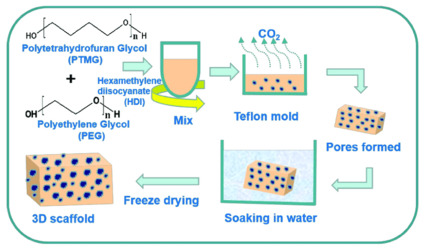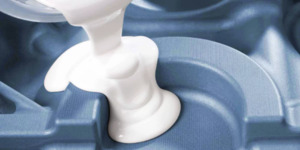Section 1 Identification of the mixture/substance and of the company/undertaking
- Product identifier:
Polyurethane
1.2 Relevant identified uses of the mixture or substance and uses advised against
Relevant identified uses: mixing and dispensing on the wall tile paper Uses advised against no data.
1.3 Details of the supplier of the safety data sheet:

Section 2 Hazards identification
2.1 Classification of the mixture or substance
Hazard Class and Category: Hazard statement: Not classified. –
2.2 Label elements
Product identification: Trade name: Polyurethane
Hazardous component(s): –
- GHS Pictogram: Not required.
- Signal word: Not required.
- Hazard statement: Not required
- Supplemental hazard information: –
- Precautionary statements – General: –
- Precautionary statements – Response: –
- Precautionary statements – Storage:
The container should be placed in a cool place, the storage area should be well ventilated (temperature 5 ~ 30 ℃), and the container should be kept sealed.
Precautionary statements – Disposal:
Dispose of contents/containers in accordance with national regulations.
Other liabilities for labeling:
Tactile warning of danger: Not required.
Transport classification: see section 14.

Section 3 Composition/information on ingredients
3.1
| BZ-618-18 A | |||
| Name | Chemical formula | CAS NO. | Proportion |
| 1. Alicyclic isocyanates | R-N=C=O | 75-13-8 | 90% |
| 2. Polyol resin | R-[O-CH2-CH]nOH | 29860-47-7 | 10% |

Section 4 First aid measures
4.1 Description of first aid measures
1) After inhalation, the patient must be moved to a fresh air place immediately.
2) In case of respiratory arrest, artificial respiration should be given immediately by a trained person.
3) In case of eye contact, open the eyelids immediately and rinse with plenty of water for more than 15 minutes.
4) In case of skin contact, wash the affected part with water and soap.
5) If the patient is about to lose consciousness or has lost consciousness or spasm, do not feed anything by mouth. Do not induce vomiting. Give the patient 300 ml of water to dilute the contents in the stomach. If the patient vomits naturally, let the patient move forward to avoid inhaling vomitus.
6) Go to the hospital immediately.

Section 5 Fire-fighting measures
5.1 Fire extinguishing mediators: carbon dioxide, dry powder extinguisher, foam, water spray.
5.2 Firefighting Guide: Evacuate the staff to the windward place, wear complete protective equipment, and use a personal respirator. When the leakage is not on fire, spray mist to disperse the vapor and dilute it into a non-flammable mixture.
Section 6 Accidental release measures
6.1 Personnel precautions: restrict personnel to enter until the leakage is cleaned up; The trainees are responsible for cleaning up; Please wear proper personal protective equipment when cleaning spills.
6.2 Cleaning methods:
1) Provide appropriate protective equipment and ventilation equipment.
2) Remove the heat source and fire source.
3) Use sand, soil, or other inert materials to contain the leakage.
4) Avoid methanol flowing into sewers or other confined spaces.
5) Collect the leakage in the most convenient and safe way.

Section 7 Safe storage
The container should be placed in a cool place, the storage area should be well ventilated (temperature 5 ~ 30 ℃), and the container should be kept sealed. Do not store or eat, drink or tobacco in this area, so as to avoid pollution and keep away from heat, sparks, and flames.
Section 8 Exposure controls / personal protection
| Personal protective equipment | eye: chemical safety splash goggles, eye washing equipment |
| breathing: | Organic vapor filter or poison filter respirator |
| glove: | General rubber gloves, lined gloves |
| other: | rubber working shoes |
| Ventilation system | keep air ventilation |
| Precautions for operation and storage | Keep the container closed Store in a cool place away from heat and file storage and use areas should be non-smoking areas |
| Personal hygiene | Wear a protective mask, gloves, protective clothing, and safety shoes when working Take off the contaminated clothes as soon as possible after work and wash them before putting them on or discarding them. The laundry should be informed of the hazards of contaminated clothes. Smoking or eating is strictly prohibited in the workplace Wash hands thoroughly after handling. Maintain good housekeeping. |

Section 9 Physical and chemical properties
| Material state:【 】Paste【 】Powder【 】Solid【√】Liquid【 】Gas | PH value: 6.5 |
| Appearance: colorless or yellowish liquid | |
| Smell: NA | |
| Boiling point: ℃ 149.9 | Vapor pressure: 49 mmHg |
| Vapor density(air=1): 0.89 | Proportion(water=1): 1. 0~1.2 |
| Evaporation rate (Butyl acetate=1): 0.01 | Solubility in water: insoluble |
Section 10 Stability and reactivity
10.1 Chemical stability: stable under normal temperature and storage conditions.
10.2 Substances to be avoided: None
Section 11 Toxicological information
Non-acute toxicity
Section 12 Ecological information
Non-serious pollution
Section 13 Disposal considerations
Incineration safety and sanitation burial shall be handled in accordance with the current laws and regulations.

Section 14 Transport information
Land transport:
Road/ Railway ADR/RID: Not classified.
14.1. UN number: –
14.2. UN proper shipping name: –
14.3. Transport hazard class(es): –
14.4. Packing group: –
14.5. Environmental hazards: –
14.6. Special precautions for users: –
Waterways:
Inland waterways/ Sea transport ADN/IMDG: Not apply to the product.
Air transport: ICAO / IATA: Not applicable to the product.
Section 15 Regulatory information
Nonstate regulated materials
Section 16 Other information
The above information on composite material has been tried to be correct, but errors are still inevitable. All data and information are for reference only. Users should judge its usability according to their actual needs.
Read this: Best Pills for Erection: Your Comprehensive Guide to Enhanced Performance
- Znaki Sverige: nyheter om de verksamheter som påverkar den moderna världsbilden
- Best Pills for Erection: Your Comprehensive Guide to Enhanced Performance
- TOP 6 Epoxy Resin Applications in 3C Electronics Industry
- The Role of Epoxy Resin in Enhancing Electronics: Applications and Benefits
- A Comprehensive Guide to Epoxy Potting in Industrial Applications